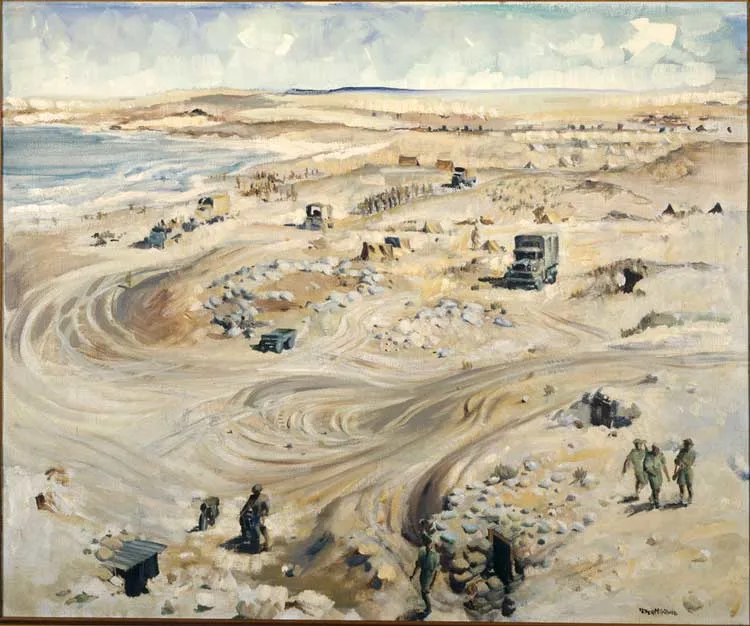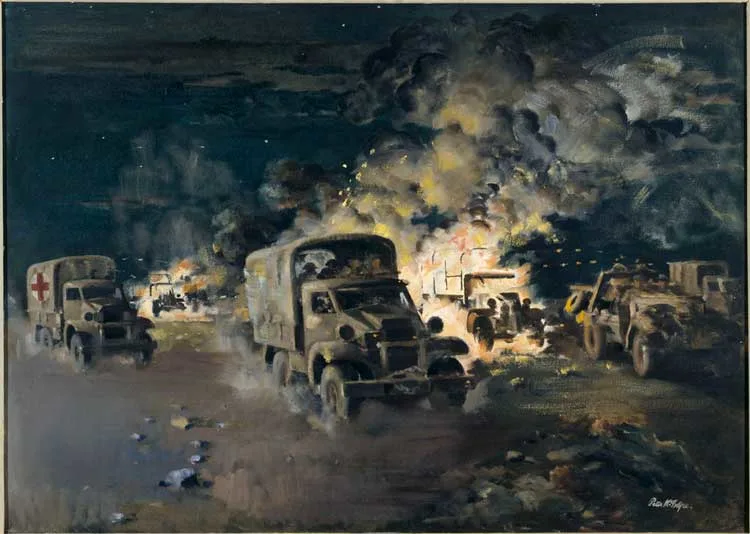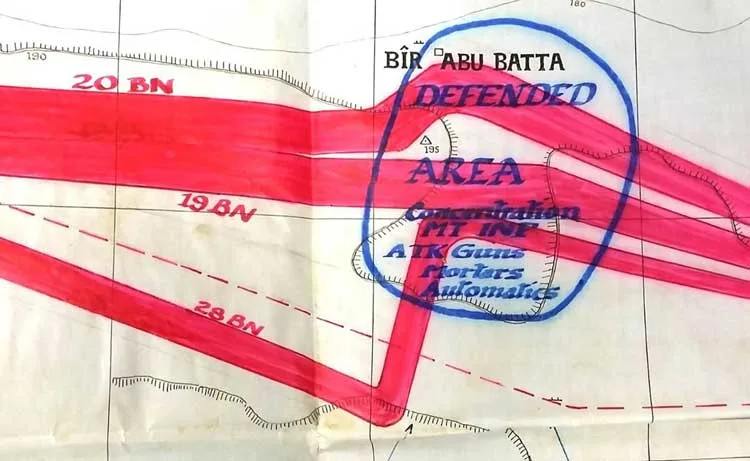The Breakout at Minqar Qaim
The breakout at Minqar Qaim was one of many intense battles fought in North Africa during the Second World War.
Surrounded by fast-moving German forces and facing certain defeat, the New Zealand Division had no choice but to launch a breakout on the night of 27-28 June 1942.
The commander of the 2NZEF, Major-General Bernard 'Tiny' Freyberg had initially set up defensive positions at Mersa Matruh, a coastal town around 450 km west from Cairo. Seeking a more mobile role for his division, he moved the New Zealanders further south to Minqar Qaim.
Eight months before the breakout, the Division had taken heavy losses during Operation Crusader. "With 879 dead and 1700 wounded, the New Zealand Division had fought its most costly battle of the war” notes NZHistory. “In February 1942, at the New Zealand government's insistence, they moved to Syria to recover."
However, when the German commander, Field Marshal Rommel, launched a fresh offensive in the Western Desert, the Division was recalled back to North Africa to face the advancing forces. Within days, rapidly advancing German forces had cut the New Zealanders off from Allied forces to the east. The Division soon found itself surrounded and cut off from any help.
Ammunition levels were dire – the artillery only had enough shells for one more day. This set of circumstances led the Division to develop a bold plan; to breakout of the encirclement. Led by the 4th Brigade, after midnight on 28 June, the New Zealand Division burst through the ring of German forces.
Taking the German forces by surprise, the New Zealanders bayoneted and shot their way through the enemy. In the confusion that followed, the Division caught a German medical unit and its patients in the battle, killing many of them. This incident has led some to allege that New Zealand troops committed a war crime. Others point to evidence that the troops involved were not aware that the German personnel they were attacking were from a medical unit.
The breakout of infantry was followed by hundreds of vehicles, driving at full pace with orders not to stop for anything. Covered in darkness and in a blanket of thick dust, it was this aspect of the breakout that New Zealand war artist Peter McIntyre strikingly captures in 'The breakthrough, Minqar Qa'im, 27-28 June 1942'. The work is part of the National Collection of War Art. The collection includes about 1,500 artworks from the First and Second World Wars, as well as other military history.
We also hold accounts of the breakout at Minqar Qaim by 2NZEF soldiers who were there. These were used to help write the official narratives of the North African campaign. We also hold a large collection of unit diaries from the regiments involved, and many maps and plans, such as this detail from 4th Brigade.
For some, the breakout is important for what might have happened if things had not gone the New Zealanders’ way. “Had the Division been destroyed at Minqar Qaim” noted Defence Minister Phil Goff in 2006, “New Zealand would not have been able to make the significant contribution it did between 1942 and 1945, in North Africa and in Italy, to the defeat of Nazi Germany.” Footage from other North African operations can also be found on our YouTube page, such as this silent footage from 1941, which gives a sense of the terrain and challenges involved at Minqar Qaim:
More information on the New Zealand Division in North Africa can be found at NZHistory.


